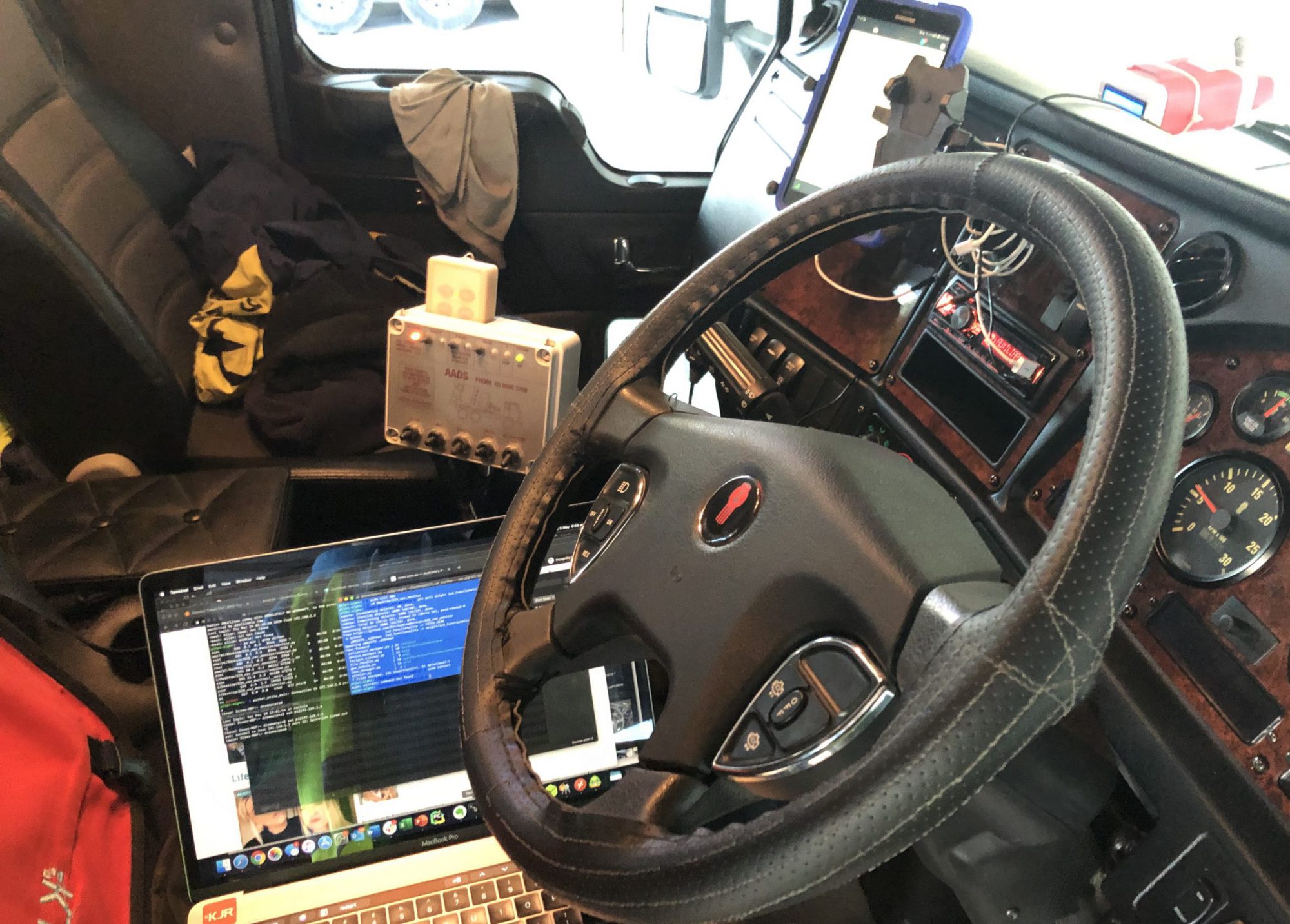Recently we travelled up the highway to pick up one of our FatigueM8 units. This unit is due for an upgrade and as it was one of the first we installed some 15 months ago!
According to the timestamp on the photo on my phone, around lunchtime on the 1st July 2020 we kicked off the installation. Since we completed the installation this big-rig has been carting sand and gravel up and down the Hume Highway 6 days a week pretty constantly.

The compute unit was a little dusty and the colour is a bit faded, but otherwise in great working in order.
The steering wheel over on the other hand was quite worn and the pattern of wear was interesting as there had been several drivers in this truck over the past 15 months.
As can be seen in the photo below, highlighted in yellow, the right hand side of the steering wheel cover is quite worn. This cover was made out of tanned leather and the top layer has worn off the section 1 and 2. The conductive stitching has also been worn off the section from 1,2 and 4.


This pattern suggests that the drivers regularly drove with there right hand on the wheel, most likely with the palm of their hand around the area of most wear.
Interestingly, the underside of the steering wheel also tells a story, in section 1 the stitching where the drivers fingers would be is still in good condition, where as the stitches near section 2 is worn. Its like that a driver adopting a “10-2” hand position would cause this pattern.
There was less wear on the left hand side of the steering wheel cover (below), which considering most people are right-handed does stand to reason. On the left hand side we can see that the stitching has been mostly worn off the top and a little bit on the underside, but no large patches were the shiny leather has been removed.

Reviewing the wear patterns helps us to improve the steering wheel cover design. In our latest steering wheel covers we’ve adjusted the stitching pattern to take into account wear such as can be seen on this example. Now we focus the stitching on the underside of the cover, where the finger tips will come into contact and have all but removed stitching on the top of the cover. It’ll be interesting to see the state of future covers after 15 months use!



